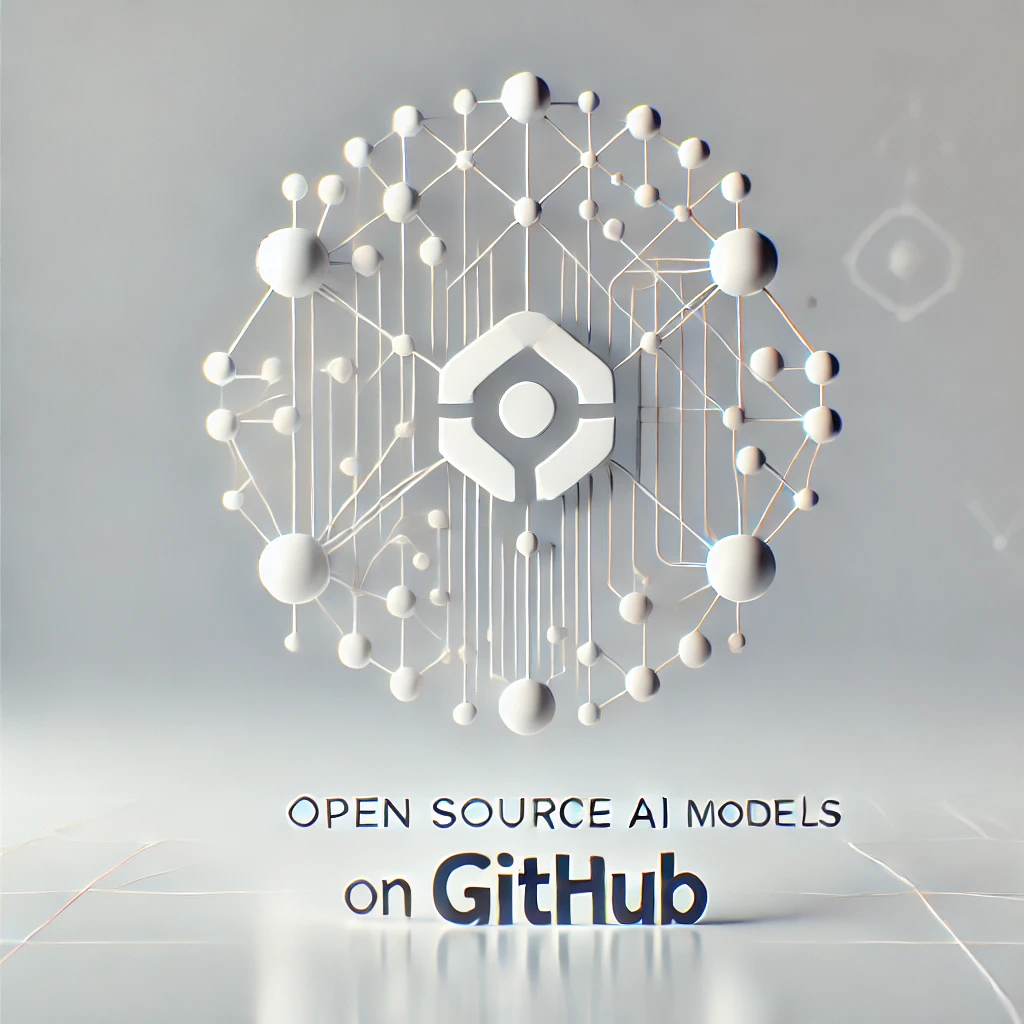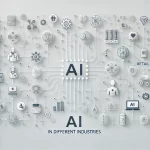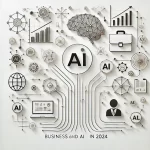Introduction:
At ZenBuilder AI, we’re committed to helping businesses leverage the power of artificial intelligence to drive innovation and growth. The open-source community on GitHub is a goldmine of cutting-edge AI models and implementations. In this comprehensive guide, we’ll explore how these innovations across various domains can create substantial business value. We’ll dive deep into each area, providing detailed examples and discussing potential applications that can transform your business operations.
Computer Vision
Computer vision technologies are revolutionizing how machines interpret and interact with visual data. This field has enormous potential across various industries.
1.1. Object Detection
Models: YOLO, Faster R-CNN, SSD
Business Applications:
- Retail: Automated inventory management and shoplifting prevention
- Manufacturing: Quality control and defect detection on production lines
- Automotive: Enhancing autonomous vehicle perception systems
Example: A food processing plant implements YOLO for real-time detection of foreign objects on conveyor belts, significantly reducing contamination risks and improving food safety.
1.2 Semantic Segmentation
Models: U-Net, DeepLab, Mask R-CNN
Business Applications:
- Agriculture: Crop health monitoring and precision farming
- Urban Planning: Analyzing satellite imagery for land use classification
- Healthcare: Tumor detection and organ segmentation in medical imaging
Example: An agricultural tech company uses DeepLab to analyze drone footage of fields, precisely identifying areas affected by pests or nutrient deficiencies, allowing farmers to apply treatments only where needed.
1.3 Pose Estimation
Models: OpenPose, DensePose
Business Applications:
- Retail: Analyzing customer behavior and store navigation patterns
- Sports: Performance analysis and injury prevention
- Animation: Streamlining motion capture for film and game production
Example: A sportswear retailer uses OpenPose to study how customers interact with product displays, optimizing store layouts to increase engagement and sales.
Natural Language Processing (NLP)
NLP is transforming how businesses handle and derive value from textual data.
2.1 Text Classification
Models: BERT, XLNet, RoBERTa
Business Applications:
- Customer Service: Automated ticket routing and sentiment analysis
- Content Moderation: Detecting inappropriate or harmful content
- Market Research: Categorizing and analyzing consumer feedback
Example: A social media platform implements BERT for multi-label classification of user posts, automatically tagging content for easier discovery and targeted advertising.
2.2 Named Entity Recognition (NER)
Models: SpaCy, Stanford NER, Flair
Business Applications:
- Legal: Extracting key information from contracts and legal documents
- Healthcare: Identifying medical entities in clinical notes
- Finance: Extracting company names, figures, and dates from financial reports
Example: A legal tech startup uses Flair’s NER capabilities to automatically extract and categorize key clauses from thousands of contracts, dramatically speeding up contract review processes.
2.3 Text Generation
Models: GPT-3, T5, CTRL
Business Applications:
- Marketing: Generating personalized email campaigns and ad copy
- Journalism: Automated report generation for financial or sports news
- Customer Support: Creating detailed, context-aware responses to inquiries
Example: A e-commerce company uses GPT-3 to generate thousands of unique product descriptions, improving SEO performance and reducing copywriting costs.
Generative Models
Generative models are pushing the boundaries of artificial creativity and data synthesis.
3.1 Image Generation
Models: StyleGAN, BigGAN, DALL-E
Business Applications:
- Fashion: Virtual try-on experiences and design prototyping
- Real Estate: Generating virtual stagings of properties
- Gaming: Creating diverse and realistic game assets
Example: A furniture retailer uses StyleGAN to generate images of their products in various room settings, helping customers visualize pieces in their homes.
3.2 Text-to-Image Synthesis
Models: DALL-E, Imagen
Business Applications:
- Advertising: Rapid prototyping of visual concepts
- Education: Creating custom illustrations for learning materials
- Product Design: Translating text descriptions into visual concepts
Example: An educational technology company uses DALL-E to generate custom illustrations for their interactive learning modules, enhancing engagement and comprehension.
3.3 Music Generation
Models: MuseNet, Jukebox
Business Applications:
- Entertainment: Creating background music for videos or games
- Advertising: Generating custom jingles or mood music
- Music Production: Assisting composers with idea generation
Example: A video editing software integrates MuseNet to provide users with AI-generated background music that matches the mood and pace of their videos.
Reinforcement Learning
Reinforcement Learning (RL) is optimizing complex decision-making processes across various domains.
4.1 Resource Management
Models: PPO, A3C, SAC
Business Applications:
- Energy: Optimizing power grid operations
- Cloud Computing: Dynamic resource allocation in data centers
- Manufacturing: Optimizing production schedules
Example: A cloud service provider implements PPO to dynamically allocate computing resources, reducing energy consumption while maintaining performance SLAs.
4.2 Robotics Control
Models: DDPG, TD3
Business Applications:
- Warehousing: Improving robotic pick-and-place operations
- Agriculture: Autonomous crop harvesting
- Healthcare: Robotic surgery assistance
Example: An agricultural technology company uses TD3 to train robotic arms for delicate fruit picking, increasing harvest efficiency and reducing labor costs.
4.3 Game AI
Models: AlphaZero, MuZero
Business Applications:
- Finance: Developing sophisticated trading strategies
- Cybersecurity: Creating adaptive defense systems
- Strategy Consulting: Simulating complex business scenarios
Example: A fintech startup uses MuZero to develop an AI-powered trading system that can adapt to changing market conditions in real-time.
Unsupervised Learning
Unsupervised learning techniques are uncovering hidden patterns in data, providing valuable insights.
5.1 Clustering
Models: K-means, DBSCAN, Gaussian Mixture Models
Business Applications:
- Marketing: Customer segmentation for targeted campaigns
- Healthcare: Patient grouping for personalized treatment plans
- E-commerce: Product categorization and recommendation
Example: A telecom company uses DBSCAN to identify clusters of customers with similar usage patterns, enabling personalized service plans and reducing churn.
5.2 Anomaly Detection
Models: Isolation Forest, One-Class SVM, Autoencoders
Business Applications:
- Finance: Fraud detection in transactions
- Manufacturing: Predictive maintenance for machinery
- Cybersecurity: Identifying unusual network activity
Example: A credit card company implements an Isolation Forest algorithm to detect fraudulent transactions in real-time, significantly reducing financial losses.
5.3 Dimensionality Reduction
Models: PCA, t-SNE, UMAP
Business Applications:
- Bioinformatics: Analyzing high-dimensional genetic data
- Market Research: Visualizing complex customer behavior data
- Natural Language Processing: Creating word embeddings
Example: A pharmaceutical company uses UMAP to visualize complex molecular data, accelerating the drug discovery process by identifying promising compounds more quickly.
Audio and Speech
Audio processing models are enhancing how businesses handle sound data.
6.1 Speech Recognition
Models: DeepSpeech, Wav2Vec, Jasper
Business Applications:
- Customer Service: Real-time transcription of customer calls
- Healthcare: Automated note-taking during patient consultations
- Legal: Transcribing court proceedings and depositions
Example: A call center implements DeepSpeech for real-time transcription and analysis of customer calls, improving response times and enabling immediate sentiment analysis.
6.2 Music Analysis
Models: VGGish, CREPE
Business Applications:
- Streaming Services: Automated music tagging and recommendation
- Copyright: Detecting unauthorized use of licensed music
- Marketing: Matching music to brand identities for advertisements
Example: A music streaming service uses VGGish to automatically tag and categorize new music uploads, improving discoverability and recommendation accuracy.
6.3 Voice Synthesis
Models: Tacotron, WaveNet
Business Applications:
- Accessibility: Text-to-speech for visually impaired users
- Entertainment: Dubbing and voice-over production
- Branding: Creating consistent voice identities for virtual assistants
Example: An audiobook publisher uses Tacotron to generate natural-sounding narrations, dramatically reducing production time and costs.
Graph-Based Models
Graph-based models are ideal for analyzing interconnected data structures.
7.1 Social Network Analysis
Models: GraphSAGE, GCN
Business Applications:
- Social Media: Improving friend recommendations
- Human Resources: Analyzing organizational structures
- Marketing: Identifying key influencers for campaigns
Example: A professional networking platform uses GraphSAGE to enhance its job recommendation system, considering both user profiles and their professional connections.
7.2 Recommendation Systems
Models: PinSage, NGCF
Business Applications:
- E-commerce: Personalized product recommendations
- Content Platforms: Suggesting relevant articles or videos
- Travel: Recommending destinations and itineraries
Example: An online marketplace implements PinSage to create a sophisticated recommendation system that considers both item features and user interaction patterns.
7.3 Fraud Detection
Models: GraphConv
Business Applications:
- Finance: Detecting complex fraud rings
- Insurance: Identifying fraudulent claim patterns
- Cybersecurity: Uncovering coordinated attack networks
Example: An insurance company uses GraphConv to model relationships between claims, detecting subtle patterns of fraud that traditional methods might miss.
Self-Supervised Learning
Self-supervised learning is pushing the boundaries of what’s possible with limited labeled data.
8.1 Contrastive Learning
Models: SimCLR, MoCo
Business Applications:
- Computer Vision: Improving image classification with limited labels
- Natural Language Processing: Enhancing language understanding
- Robotics: Learning visual representations for manipulation tasks
Example: A manufacturing company uses SimCLR to train a defect detection system using mostly unlabeled images, significantly reducing the need for manual labeling.
8.2 Masked Language Modeling
Models: BERT, RoBERTa
Business Applications:
- Content Creation: Assisting writers with text completion and editing
- Search Engines: Improving understanding of search queries
- Customer Service: Enhancing chatbot comprehension
Example: A news organization implements BERT to power an AI writing assistant that helps journalists by suggesting relevant context and fact-checking information.
8.3 Pretext Tasks
Models: Rotation Prediction, Jigsaw Puzzle
Business Applications:
- Medical Imaging: Learning useful features from unlabeled scans
- Satellite Imagery: Understanding geographical features without labels
- Manufacturing: Learning product features from unlabeled images
Example: A satellite imaging company uses a rotation prediction model to learn meaningful features from vast amounts of unlabeled satellite imagery, improving their land use classification models.
Health and Bioscience
AI is accelerating breakthroughs in health and biosciences, with wide-ranging implications.
9.1 Drug Discovery
Models: MoleculeNet, DeepChem
Business Applications:
- Pharmaceuticals: Accelerating the drug discovery pipeline
- Biotechnology: Predicting protein structures
- Materials Science: Designing new materials with specific properties
Example: A pharmaceutical company uses MoleculeNet to screen millions of potential drug compounds, identifying promising candidates for further research much faster than traditional methods.
9.2 Medical Imaging Analysis
Models: U-Net, DeepLab
Business Applications:
- Radiology: Automated detection of abnormalities in X-rays and MRIs
- Pathology: Analyzing tissue samples for cancer detection
- Ophthalmology: Diagnosing eye diseases from retinal scans
Example: A healthcare provider implements U-Net for automated analysis of chest X-rays, providing rapid preliminary assessments and prioritizing urgent cases for radiologists.
9.3 Genomics
Models: DeepVariant, DeepSEA
Business Applications:
- Personalized Medicine: Predicting disease risk from genetic data
- Agriculture: Crop breeding and optimization
- Forensics: Improved DNA analysis techniques
Example: A biotech company uses DeepVariant to analyze genetic sequencing data, improving the accuracy of genetic testing services and enabling more precise personalized medicine recommendations.
Conclusion:
The wealth of open-source AI models available on GitHub presents unprecedented opportunities for businesses across all sectors. At ZenBuilder AI, we specialize in helping companies navigate this complex landscape, identifying the most suitable models and adapting them to specific business needs. Whether you’re looking to implement computer vision in your manufacturing process, use NLP to better understand customer feedback, or leverage reinforcement learning for optimized decision-making, we’re here to guide you every step of the way.
The future of business is AI-driven, and the time to start is now. Let ZenBuilder AI be your partner in harnessing these powerful tools to drive innovation, efficiency, and growth in your organization. Together, we can turn the promise of AI into tangible business results.



